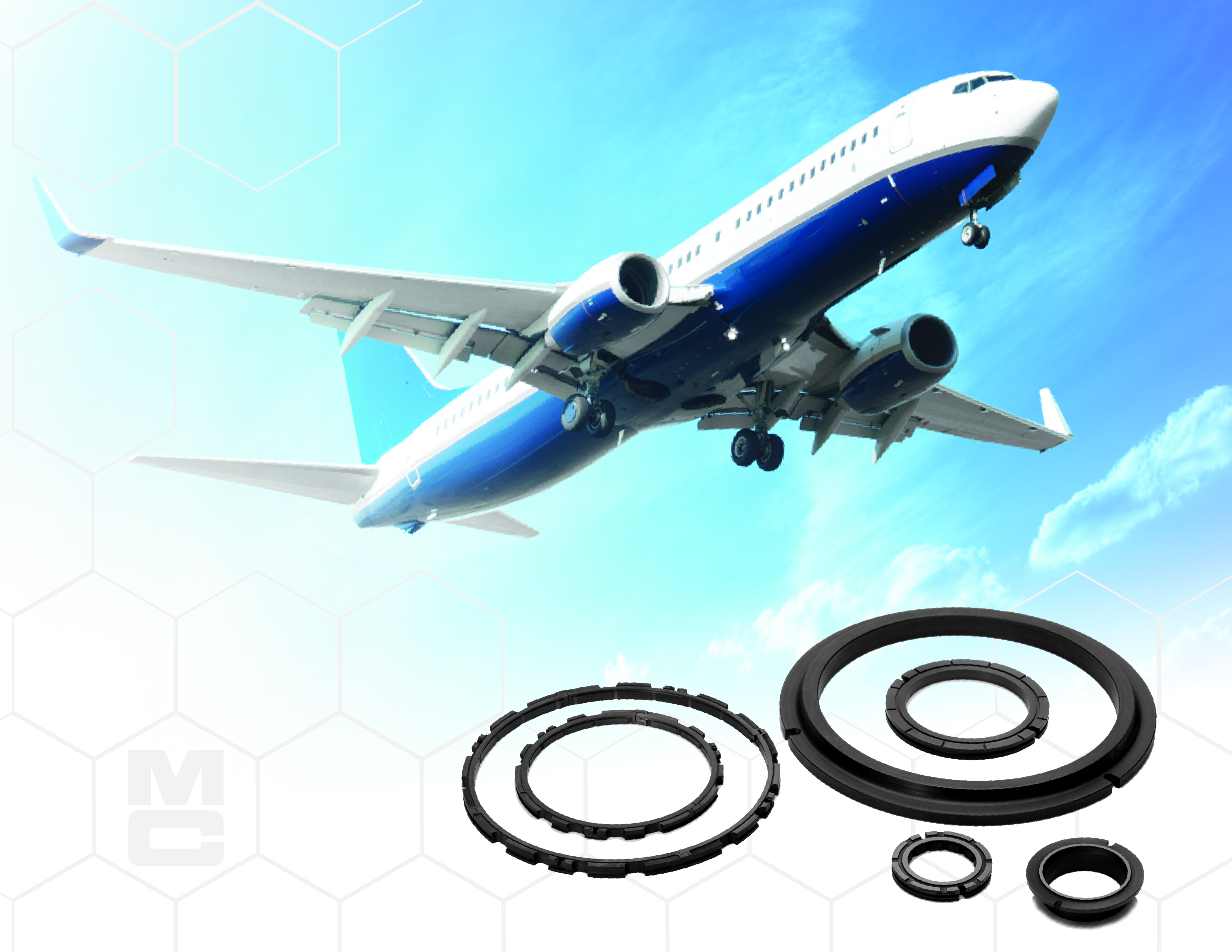
Metallized Carbon Corporation (Metcar), which makes oil-free, self-lubricating, mechanical carbon-graphite materials, says that its products are suitable for aerospace gearbox applications, which run the hydraulic pumps, generators, and air conditioning compressors. Metcar materials feature a low coefficient of friction and good wear properties in a high speed environment, making them a suitable choice for aircraft gearbox face seals.
To seal the oil lubricant within the gearbox and protect it from leaking where shafts enters and exits, most aircraft gearboxes use face seals, which usually contain a carbon-graphite stationary ring and a silicon carbide or stainless steel rotating ring. Metcar materials use dynamic ‘lift-off’ to reduce seal face wear and friction. All materials are impermeable and able to support the dynamic film used.
Metcar M-45 features improved thermal conductivity, which gives it the ability to maintain lower seal face temperatures. Other grades, including antimony-impregnated Metcar Grade M-346 and carbon-impregnated Metcar Grade M-133, can be used in gearbox seals to avoid seal face blistering or to improve the seals' resistance to coking.
‘Self-lubricating mechanical carbon materials are favored by aerospace design engineers because they stand up very well in the high speed and limited lubrication environments found in aircraft gearboxes,’ said president and CEO, Matthew Brennan. ‘Metcar's modern carbon-graphite materials are formulated with an eye to minimizing common problems associated with seal face wear, frictional heat, blistering, and coking, especially at temperatures higher than 400°F (204°C).’
This story is reprinted from material from Metcar, with editorial changes made by Materials Today. The views expressed in this article do not necessarily represent those of Elsevier.




